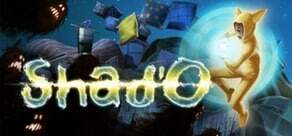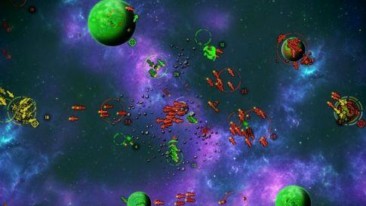Developer Summary:
in this unique Tower Defense, you will travel through William’s mind in a colored and dreamlike universe, made of a mix of pieces of memories, emotions and feelings. Will you be able to drive the fog of oblivion away and help the boy recover his memory? Your many companions’ light will be your best ally in this world distorted by fear and mystery.
What We Think:
Shad’O endeavors to tell the story of a young boy who awakens in a dark place to find a patchwork teddy bear encouraging him to go towards a light in order to be safe from the surrounding darkness. Near this light, the child finds one of his memories, but is warned by the teddy bear that a stream of shadowy threats is headed towards it, bent on destroying it.
While unable to fight the shadows himself, the boy is taught to draw upon the nearby light sources in order to gain the power to summon stationary “companions,” which he is directed to set along the one or more paths the shadows take towards the memory in order to both reveal the shadowy fog that covers the map and to hinder the progress of different types of numinous monsters that follow paths towards the memory. If they reach the memory, they sap its power an amount relative to their own. If enough of them reach the memory, it is destroyed. The more memories (maps) that the child finds and protects, the more he “remembers” and the farther down a simple talent tree he can progress.
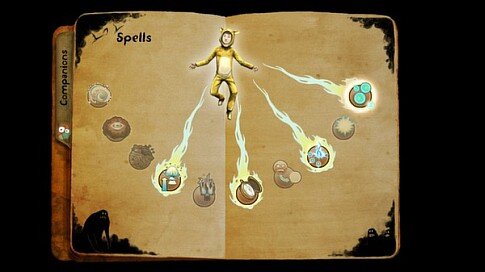
The interest I developed in the game was, honestly, an artistic one from the development side of things: I really liked what they did with the “object-oriented” storytelling. Throughout the entire game, the player is guided by the teddy bear companion. First, the voiceovers by the teddy bear help the player understand the objects and actions in the game using symbolic concepts woven throughout the storyline such as light, companion, and memory. As things progress, the voiceover offers advice, gentle encouragement, and when the player succeeds to protect a memory, offers appreciation as a reward. The voice acting has a warm, familiar narrative quality that is engaging, but this ends up being window-dressing. It is a game, after all, and the interactive component should work before all other elements.
House of Fog
Alas, Tower defense is a crowded genre, and as a member of that genre, Shad’O doesn’t stand out much among similarly-priced PC games we’ve played and enjoyed the past year. As far as all the basic concepts go, it’s got them all, but there’s no mechanic that really makes it stand out. Having played Crystal Defenders, Defense Grid, Cubemen, Dungeon Defenders, Orcs Must Die, Toy Soldiers and a whole slew of other Tower Defense games in the past couple of years, in order for a newcomer to be worthy of attention, it must really bring something new to the table. Unfortunately, game designers sometimes think a re-skin is enough to set it apart (see our review of Paper Tanks).
A TD is, after all, a form of single-player, focused RTS. That means it can easily become exasperatingly oversimplified if the level design doesn’t do something particularly clever (Defense Grid was terrific at creating puzzle-like levels that you actually wanted to make a twentieth attempt at beating). The defenses you have on offer should be varied and creative and work well to complement one another without, again, being a mere re-skin of every other TD game out there, ergo: a “tech tree” that churns out an arsenal that typically includes a scout or money collector, a standard shooter, a laser (herein the “Projector”), a small area-of-effect blaster/speedbump (“Punchers”), and a couple of variations thereof.
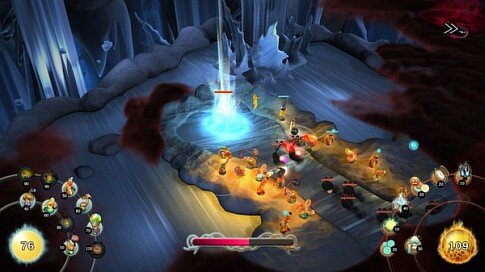
OK, Shad’O does offer some other options in combat — a collection of spells that the boy can cast with varying effects. Truth be told, though, this equates to special attacks that can be called in in other TD titles. Furthermore, it should be mentioned that though gradually you discover that each enemy has a particular weakness – isn’t that the point of units – that they are each more vulnerable to certain kinds of attacks? “A rose by any other name…” Dungeon Defenders added some RPG elements, a marketplace and some excellent online multi-player. Orcs Must Die made this fast-paced and over-the-top hilarious.
But even in the case of these TD variations, it is stretching the genre to the seams, threatening to expose itself for what it is – a rinse-and-repeat style of gameplay, not quite as complex as chess, and not quite as replayable as an RPG or sandbox with all it customization and opportunities for emergent gameplay. In Shad’O there is no scoreboard to speak of — only luminous points you accumulate from your collector and spend on defenses. Basically just survive (stay awake) through the waves until you get to the next level and see what new companion or setting faces you next. Rinse, repeat.
Fair enough, the genre is what it is, but unfortunately, even on a Quadcore desktop that can easily handle Dark Souls or Skyrim, Shad’O had some trouble sustaining smooth playback of its particle-effects-rich levels. One might suspect it has to do with the many light and fog emitters from nearly every object on the screen, but something was up with the optimization and it took me out of the dreamlike quality the developers clearly aspired to. Which is a shame, since the design elements themselves are so alluring. Having said that, even at 1920 x 1080 and “Best Graphics” settings, there was a lot of aliasing and not really much going on in terms of specularity, or complex shadows or otherwise. Nonetheless, the particle systems seemed to be hogging up my CPU’s resources.
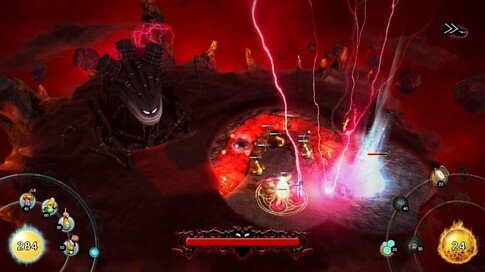
As a result, controls feel sticky and, for some reason, the camera is locked at an isometric-view angle; you can’t rotate the scene, which makes the creeps, already difficult to pick out in the black smoke that covers everything at the start of a level, even harder to mitigate and thus removing a part of the very strategic element that makes a TD what it is. Granted, adding more weapons and allies “sends back” the darkness, but in the early levels, having the creeps arrive at your goalposts without almost any time to preview them proves daunting at best. Perhaps you, the player, will find this an an engaging twist on the form…but what it really becomes, is again, just a standard TD game at half-speed. In fact the hardcore mode was not much more difficult than the normal.
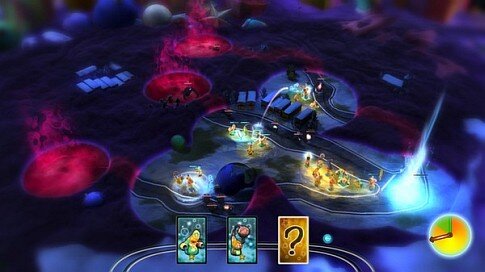
Perchance to Dream…
Given the simple mechanics, and almost textbook rendition of a tower defense time-sink – at a $9.99 price point for a PC-only Game, Shad’O doesn’t offer the experienced player much. But, if I had to keep any young kid busy, I’d feel comfortable giving this inoffensive, simple, distraction to them. Or, if such a thing exists as a person who never played a tower defense game before, this would be a great candidate to introduce them to the concept and mechanics of the genre. I think this game fare well on a mobile platform, with a lower price point and marketed towards children or parents thereof; but, with the performance issues we experienced, that may require a ground-up rewrite of the code.
In summary – Shad’O doesn’t offer much to distinguish itself in the PC marketplace for serious gamers. It’s a simple, G-rated tour through uncomplicated, almost textbook tower defense mechanics. However, it does have an effective G-rated story-driven method of teaching the player the game concepts, objects, and mechanics.
Get Shad’O on Steam
[xrr rating=”2.5/5″]


